Have you ever wondered why purple orchids command such reverence in both gardens and gift-giving? You’ll find these royal beauties among the most fascinating flowering plants, combining elegant aesthetics with rich cultural significance. While their stunning violet blooms might catch your eye first, it’s their unique growing requirements and symbolic meaning across civilizations that make them truly special. Let’s explore how you can successfully nurture these noble flowers while understanding their deeper significance.
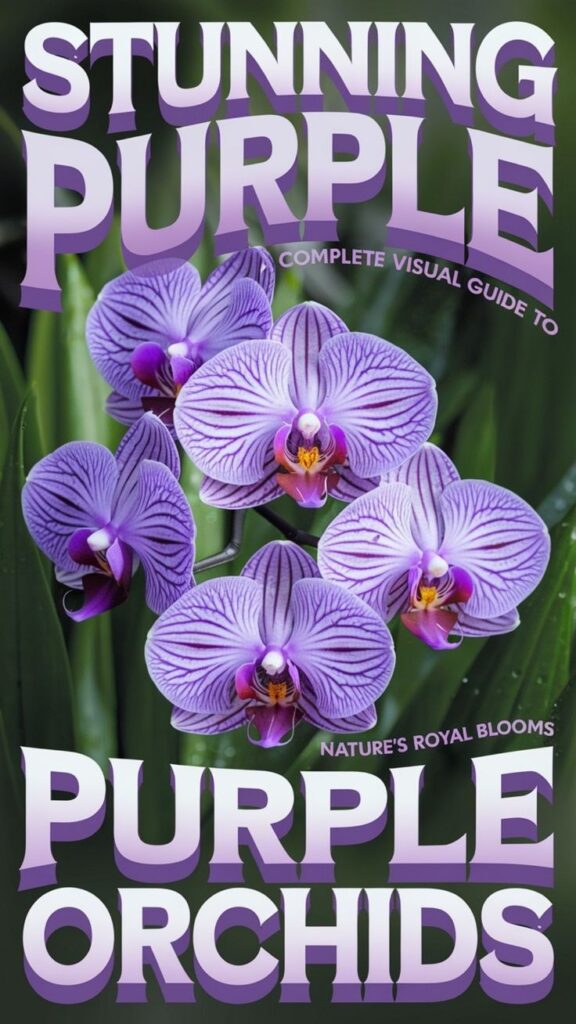
Contents
- 1 Popular Purple Orchid Varieties
- 1.1 Dendrobium Enobi Purple ‘Splash’
- 1.2 Miltonia Orchid (Miltonia spectabilis var. moreliana)
- 1.3 Vanda Orchid (Vanda coerulea)
- 1.4 Cattleya Orchid (Cattleya walkeriana var. semi-alba)
- 1.5 Paphiopedilum Orchid (Paphiopedilum delenatii)
- 1.6 Oncidium Orchid (Oncidium Sharry Baby ‘Sweet Fragrance’)
- 1.7 Phalaenopsis Orchid (Phalaenopsis violacea)
- 1.8 Zygopetalum Orchid (Zygopetalum hybrid)
- 1.9 Cymbidium Orchid (Cymbidium hybrid)
- 1.10 Masdevallia Orchid (Masdevallia hybrid)
- 1.11 Dendrobium Orchid (Dendrobium nobile var. purple)
- 1.12 Purple Bamboo Orchid (Arundina graminifolia)
- 1.13 Epidendrum Orchid (Epidendrum radicans ‘Purple’)
- 1.14 Aerides Orchid (Aerides lawrenceae)
- 1.15 Mokara Orchid (Mokara hybrid)
- 1.16 Bulbophyllum Orchid (Bulbophyllum purpureorhachis)
- 1.17 Purple Stained Laelia (Cattleya purpurata var. schusteriana)
- 2 Understanding Light Requirements for Purple Orchids
- 3 Optimal Growing Conditions and Temperature Control
- 4 Watering and Humidity Management
- 5 Essential Nutrients and Fertilization Schedule
- 6 Potting Media and Container Selection
- 7 Common Pests and Disease Prevention
- 8 Purple Orchids in Cultural Traditions
- 9 Symbolism and Historical Significance
- 10 Propagation and Maintenance Techniques
Popular Purple Orchid Varieties
While many orchid species display purple hues, several varieties consistently produce stunning violet-to-purple blooms.
Dendrobium Enobi Purple ‘Splash’
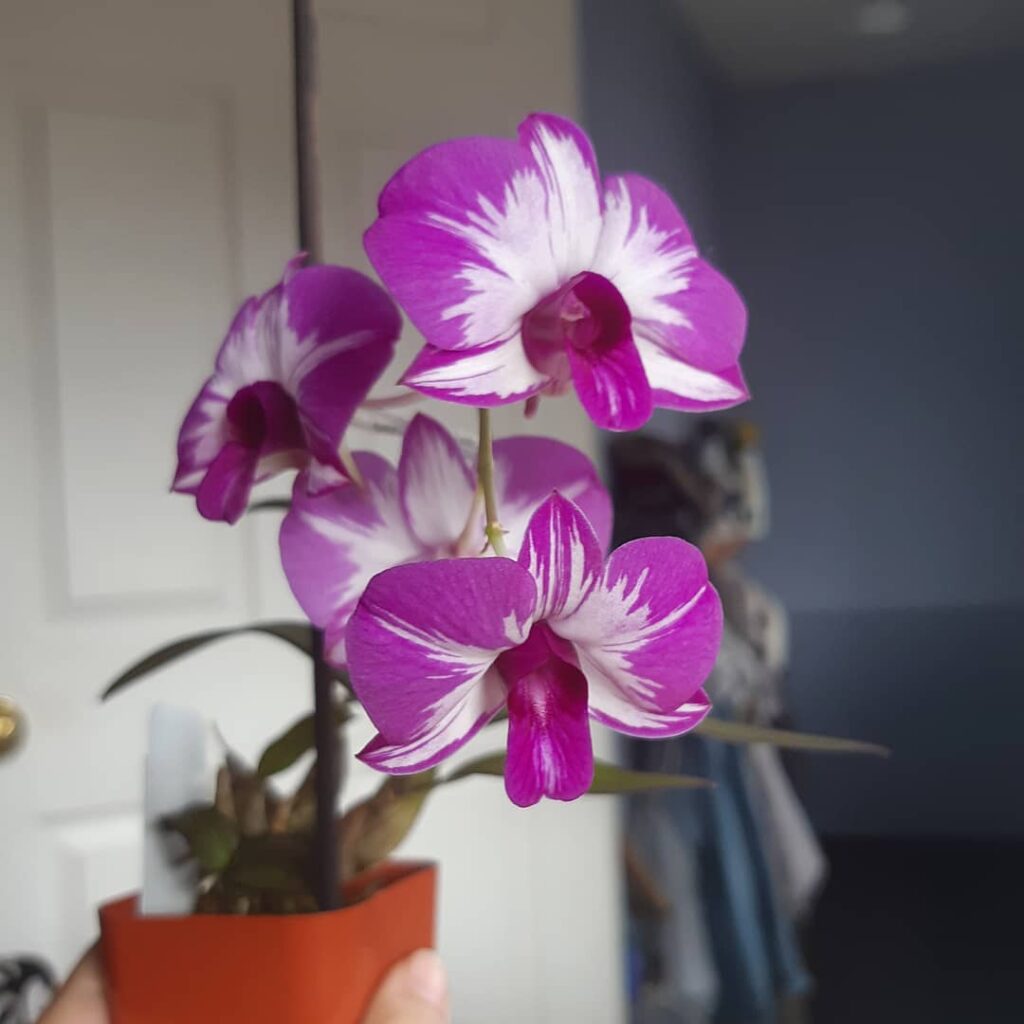
A dazzling hybrid featuring vivid purple blooms and white accents.
Miltonia Orchid (Miltonia spectabilis var. moreliana)
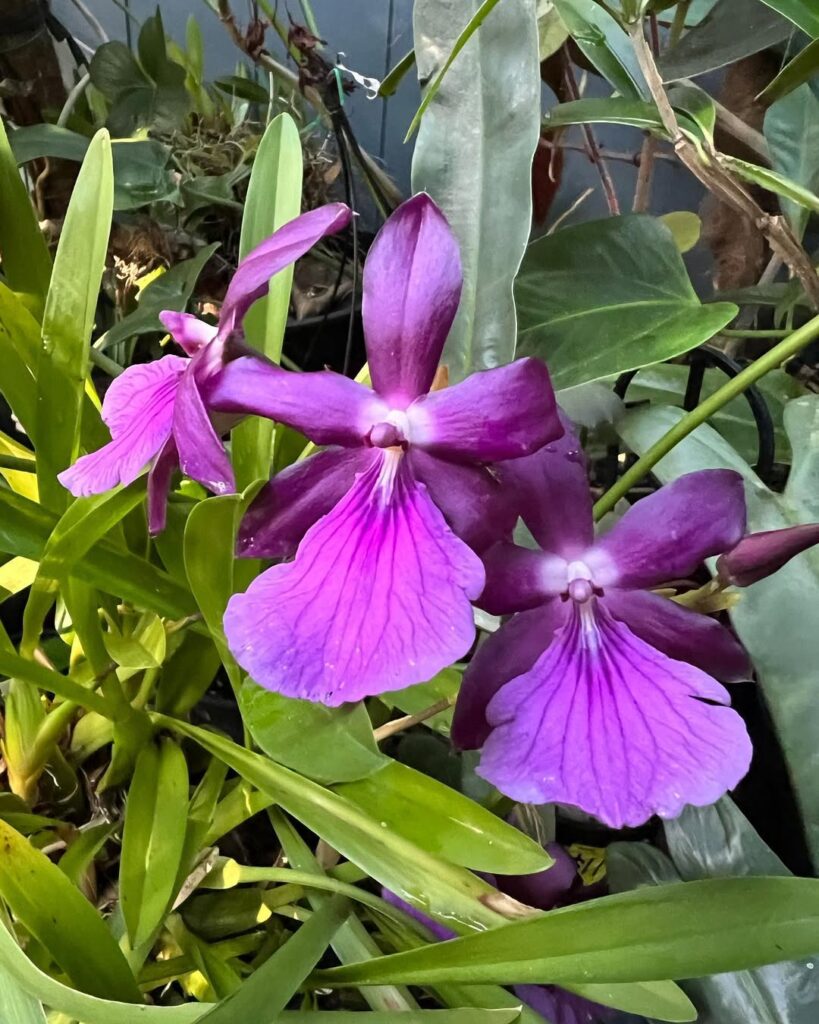
Known as the pansy orchid, its rich purple flowers are intricately patterned.
Vanda Orchid (Vanda coerulea)
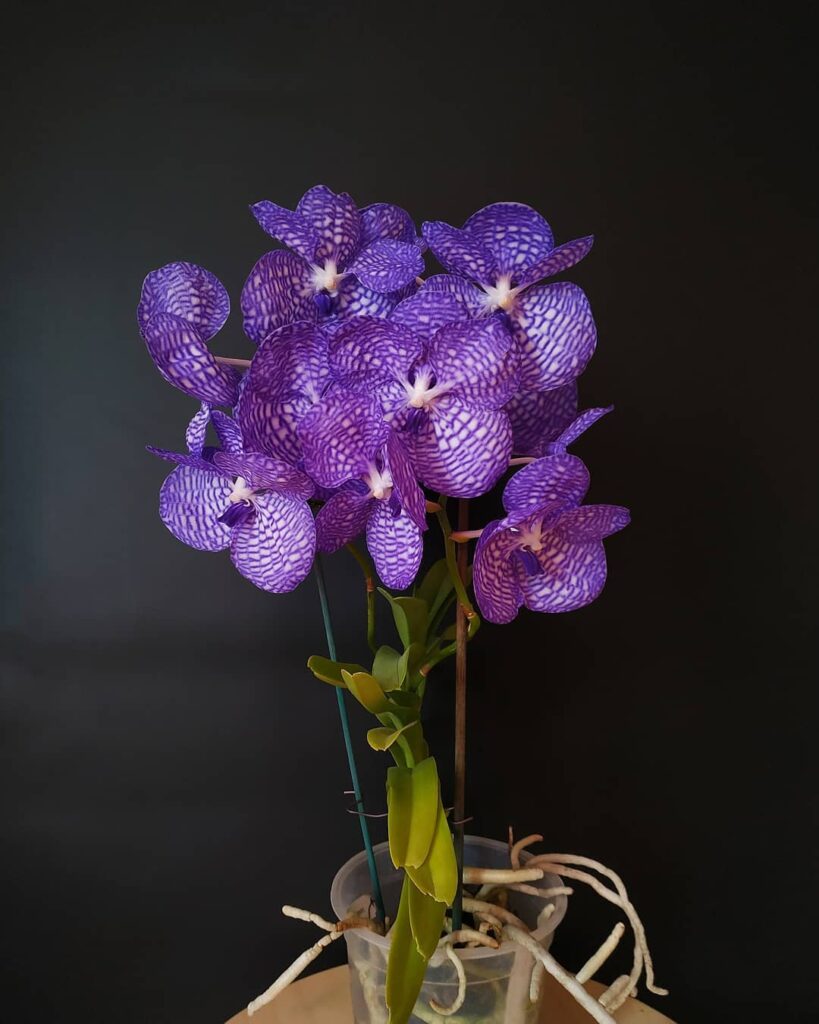
A rarity famed for its vivid purple-blue petals and unique lattice-like patterns.
Cattleya Orchid (Cattleya walkeriana var. semi-alba)
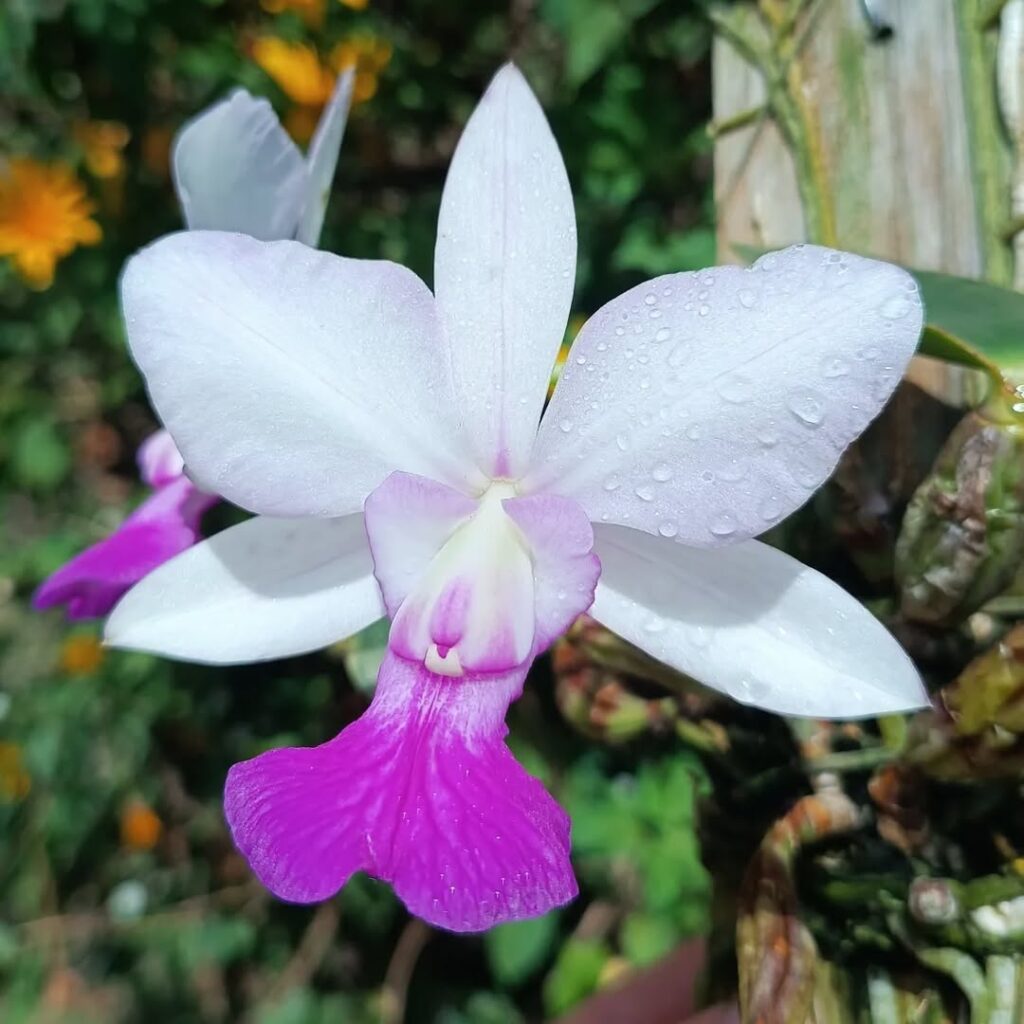
A fragrant showstopper with purple tones gracing its lip.
Paphiopedilum Orchid (Paphiopedilum delenatii)
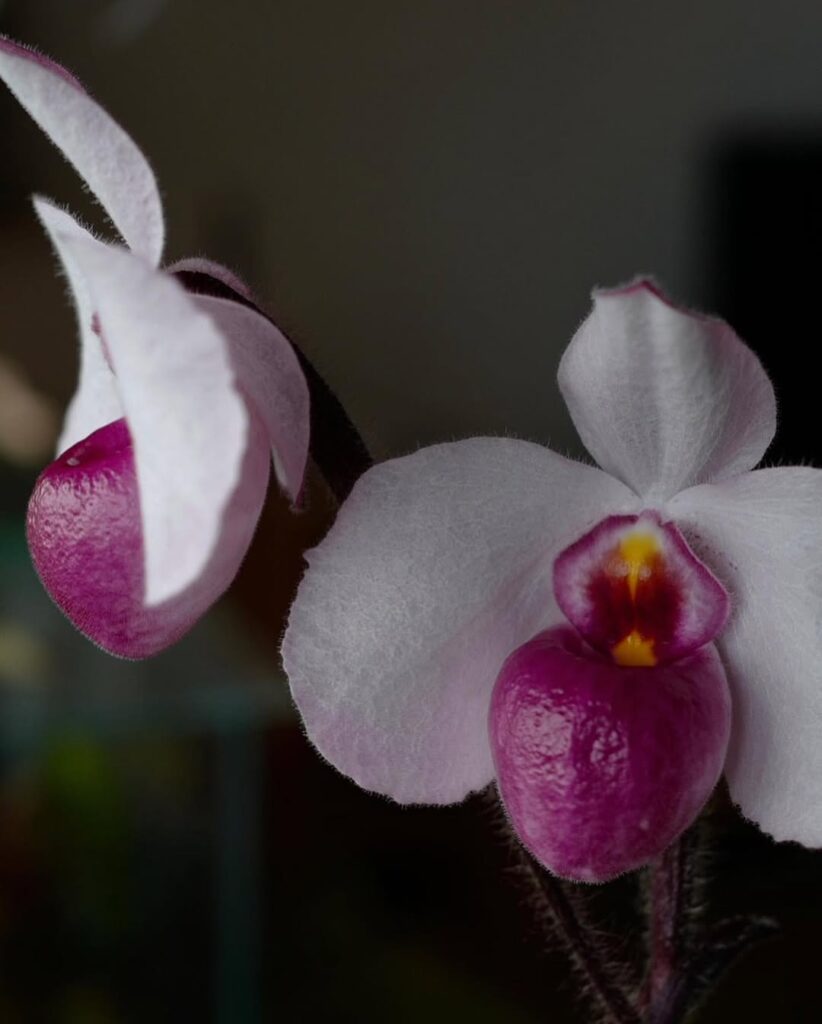
The delicate purple hues and charming pouch-like bloom make it unforgettable.
Oncidium Orchid (Oncidium Sharry Baby ‘Sweet Fragrance’)

Clusters of purple blooms exude a delightful chocolate-like scent.
Phalaenopsis Orchid (Phalaenopsis violacea)
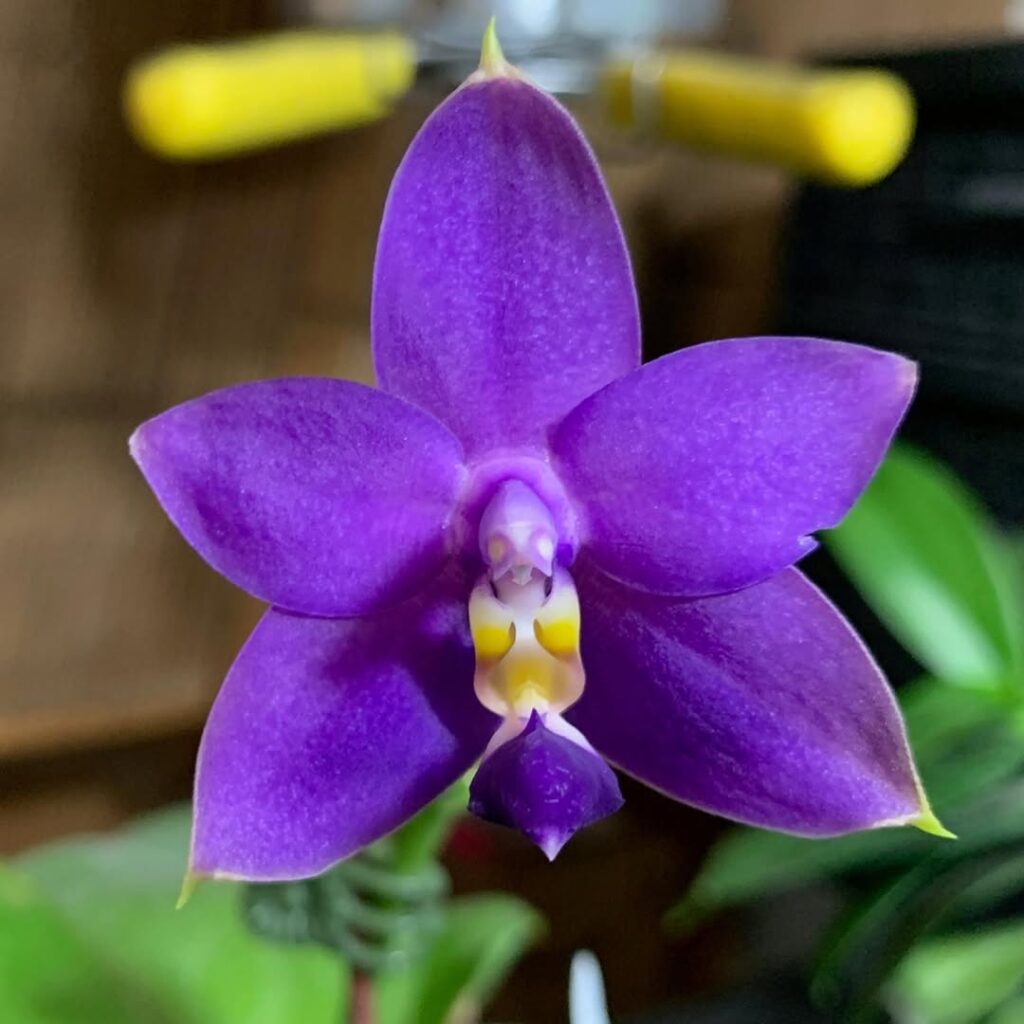
A moth orchid flaunting intense purple flowers and a sweet aroma.
Zygopetalum Orchid (Zygopetalum hybrid)
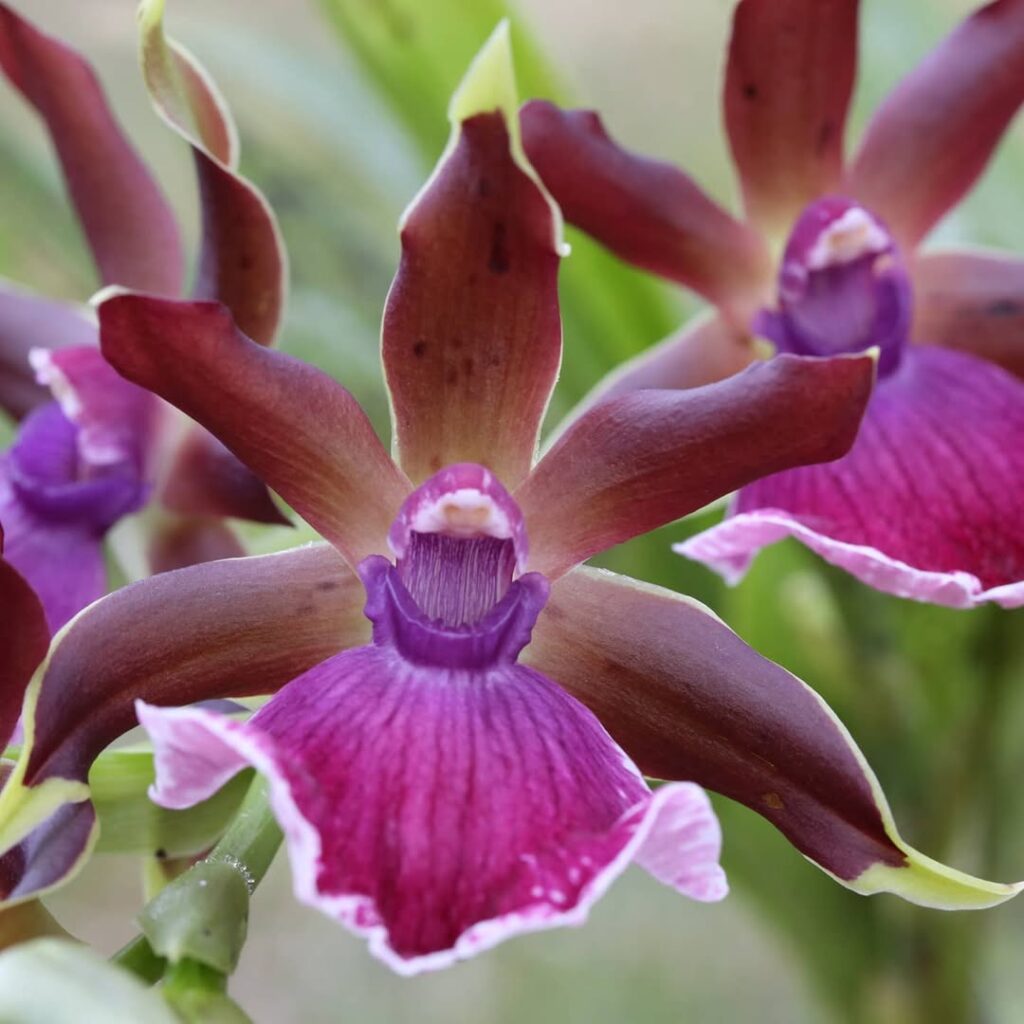
Unique purple flowers with intricate patterns emit a refreshing fragrance.
Cymbidium Orchid (Cymbidium hybrid)
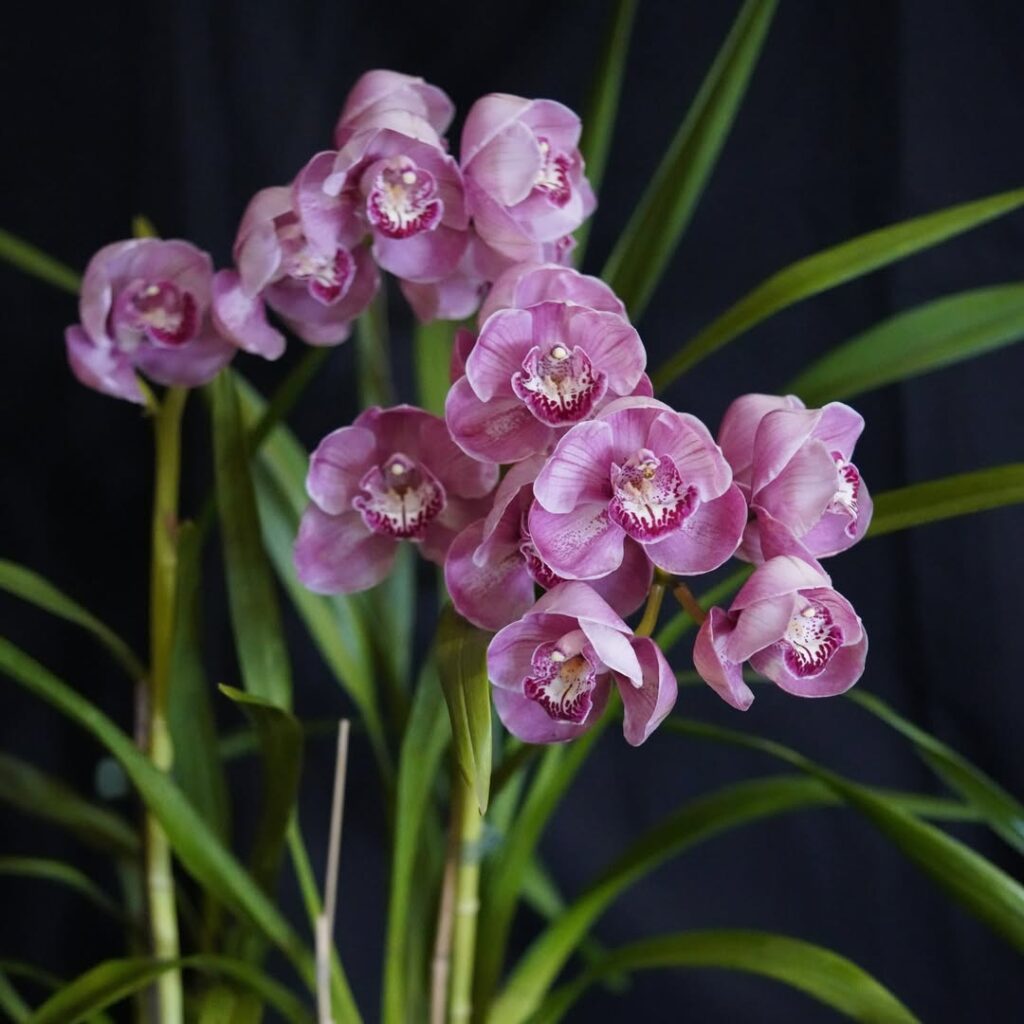
Elegant purple flowers widely sought after for arrangements.
Masdevallia Orchid (Masdevallia hybrid)
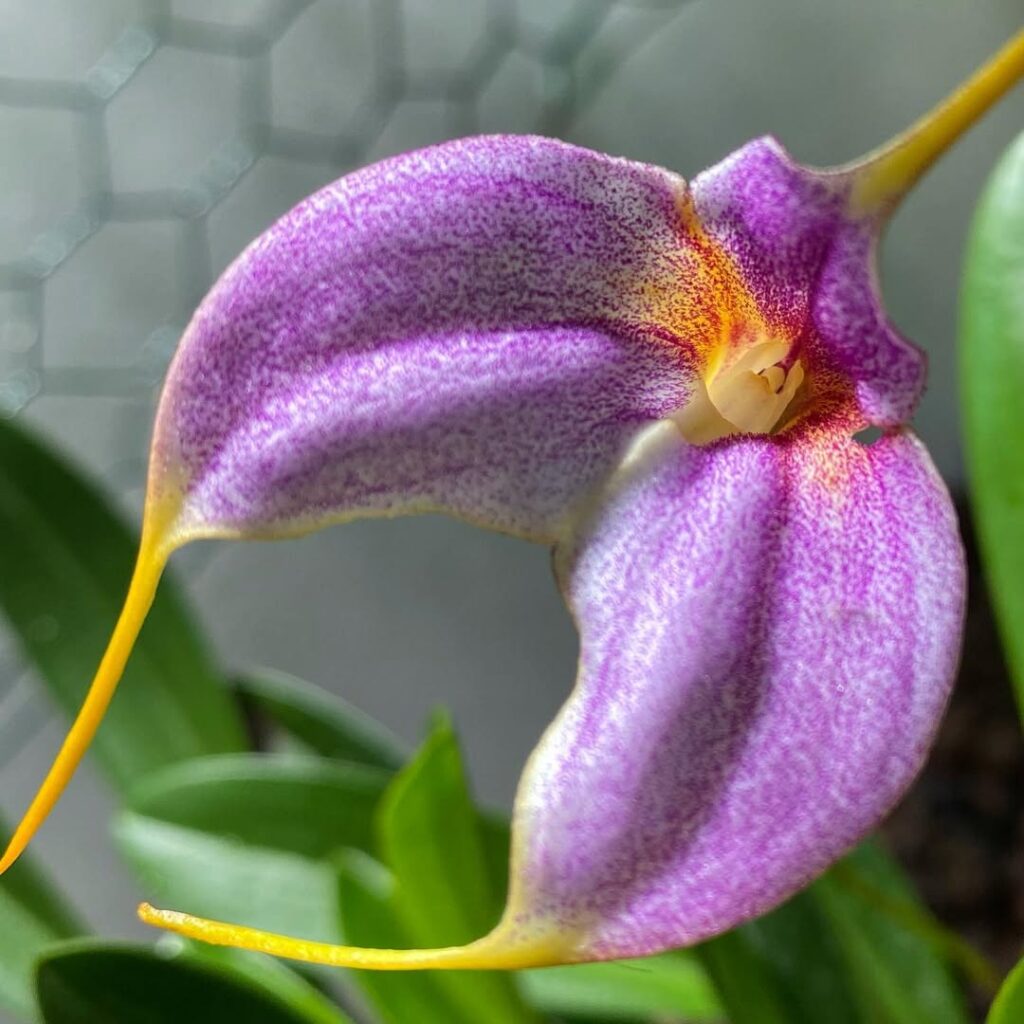
Compact and strikingly vibrant purple blooms characterize this species.
Dendrobium Orchid (Dendrobium nobile var. purple)
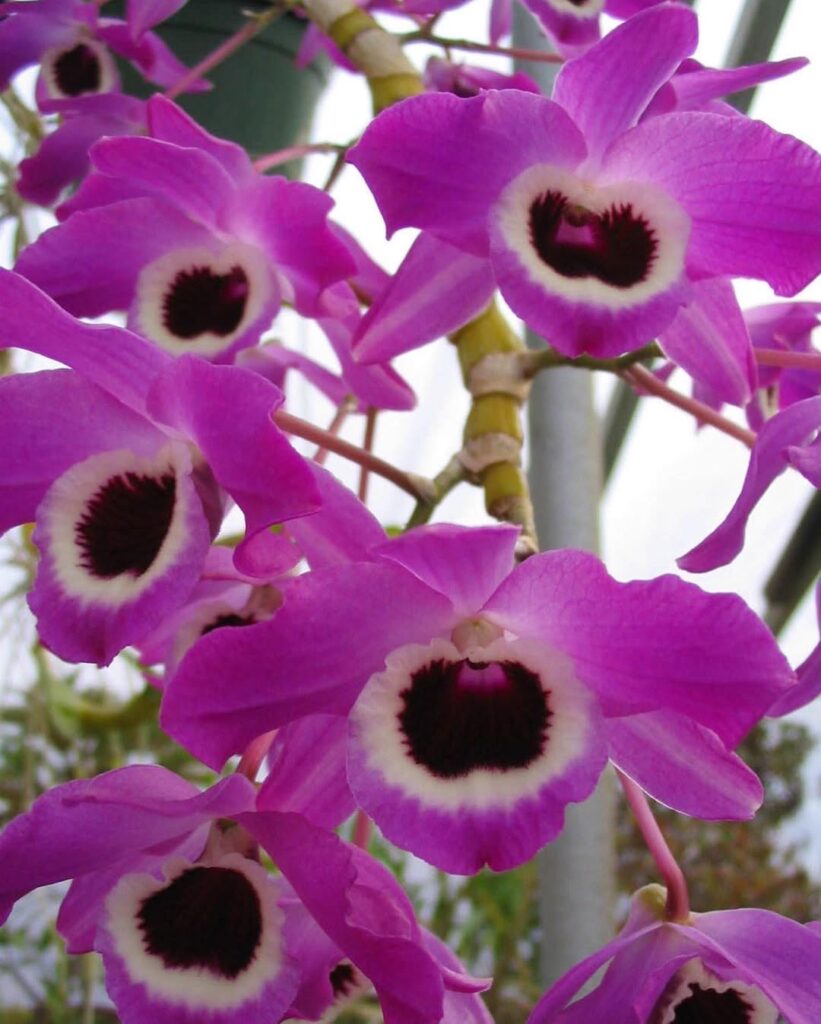
A hardy classic with bold purple clusters that thrive in diverse climates.
Purple Bamboo Orchid (Arundina graminifolia)

An exquisite terrestrial orchid with vivid purple blooms reminiscent of bamboo.
Epidendrum Orchid (Epidendrum radicans ‘Purple’)

A vibrant purple orchid commonly used for ground cover due to its plentiful blooms.
Aerides Orchid (Aerides lawrenceae)
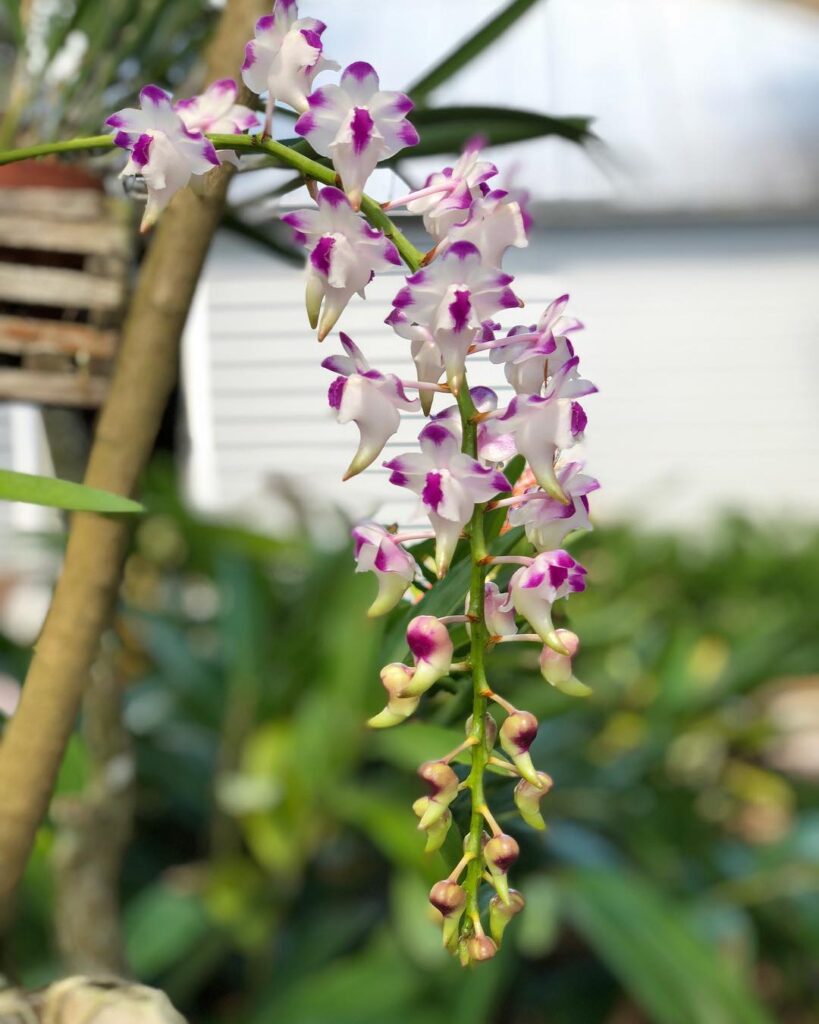
Produces cascading sprays of purple flowers, radiating a graceful charm.
Mokara Orchid (Mokara hybrid)

A vivid hybrid blending purple hues with long-lasting blooms.
Bulbophyllum Orchid (Bulbophyllum purpureorhachis)
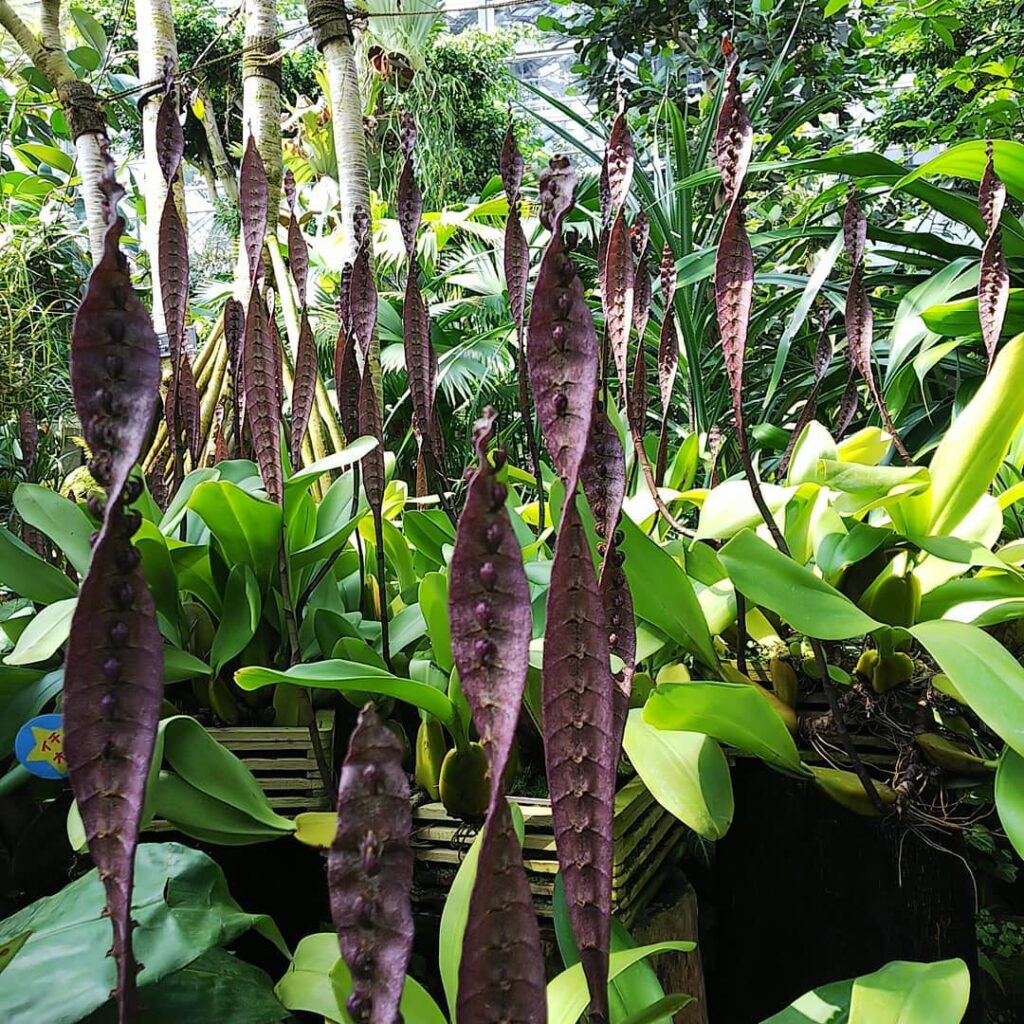
Known for its uniquely shaped purple blooms and often bizarre appearance.
Purple Stained Laelia (Cattleya purpurata var. schusteriana)
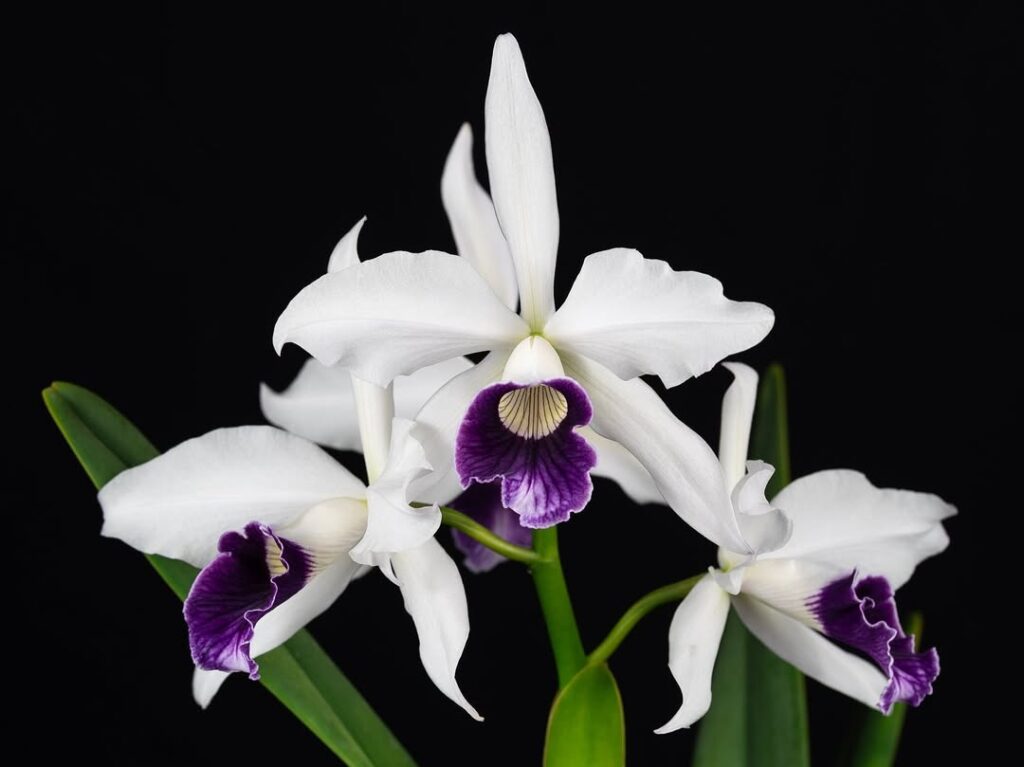
A Brazilian beauty with white petals and a striking deep purple ruffled lip.
Understanding Light Requirements for Purple Orchids
Your purple orchids will thrive with proper light management, whether you’re using natural sunlight through windows or artificial grow lights in your home. While these stunning plants need bright, indirect light for 12-14 hours daily, you’ll want to protect them from harsh afternoon sun that can scorch their delicate leaves and blooms. As seasons change, you’ll need to adjust your orchids’ light exposure, moving them closer to or farther from windows, or modifying artificial light schedules to maintain ideal growing conditions.
Natural Vs Artificial Light
Purple orchids thrive under two distinct lighting options – natural sunlight and artificial grow lights. If you’re using natural light, place your orchids near an east-facing window where they’ll receive 4-6 hours of gentle morning sun, while avoiding harsh afternoon rays that can scorch their leaves.
For artificial lighting, you’ll want to position LED grow lights 12-18 inches above your orchids for 12-14 hours daily. Full-spectrum LEDs at 2000-3000 lumens work best, and you’ll need to adjust the height seasonally as your orchids grow. While natural light is free, artificial lighting offers more control over intensity and duration.
Direct Light Exposure Risks
Although orchids need adequate light to thrive, direct sunlight exposure poses serious risks to these delicate plants. You’ll notice leaf scorching within 2-3 hours of intense sun exposure, appearing as yellow or brown patches that can’t be reversed.
To protect your purple orchid, place it 3-4 feet away from south-facing windows, or use a sheer curtain as a light diffuser. During summer months (June-August), you’ll need to be extra vigilant as the sun’s intensity increases.
If you spot early signs of burning, like pale spots on leaves, immediately move your orchid to a shadier location, preferably near an east-facing window.
Seasonal Lighting Adjustments
Building on safe light exposure practices, adapting your orchid’s light conditions throughout the year keeps it healthy and blooming. During summer months, you’ll need to reduce direct sunlight by 30%, using sheer curtains or moving your plant further from windows.
In winter, when daylight hours decrease, consider supplementing with grow lights for 12-14 hours daily. Position LED lights 12-18 inches above your orchid, and gradually adjust the height as needed.
For spring and fall shifts, you’ll want to modify light exposure incrementally. Adjust positioning by 6-8 inches every two weeks, always monitoring leaf color and temperature to guarantee ideal growing conditions.
Optimal Growing Conditions and Temperature Control
When growing purple orchids indoors, maintaining proper temperature control is absolutely essential for healthy blooms. You’ll want to keep daytime temperatures between 65-75°F (18-24°C), with a 10-15°F drop at night to simulate their natural habitat.
Monitor humidity levels closely, aiming for 50-70% moisture in the air. You can achieve this by using a humidity tray filled with pebbles and water, or installing a small humidifier nearby.
Place your orchids away from drafty windows and heating vents, as sudden temperature fluctuations can shock the plants. During winter months, move them at least 6 inches from cold windowpanes to prevent damage to their sensitive root systems.
Watering and Humidity Management
Since orchids naturally grow attached to trees in tropical environments, they’ve evolved to require a unique watering approach that mimics rainfall patterns. You’ll want to water thoroughly once the potting medium feels dry to the touch, typically every 7-10 days.
Maintain humidity levels between 50-70% by using a humidity tray or running a humidifier nearby. Don’t mist the leaves directly, as this can lead to fungal problems. Instead, place pebbles in a water-filled tray beneath the pot, ensuring the pot’s bottom doesn’t touch the water.
Water early in the morning using room-temperature water, and always allow excess water to drain completely through the pot’s holes.
Essential Nutrients and Fertilization Schedule
To maintain vibrant purple orchids, you’ll need to follow a balanced fertilization program rich in essential macronutrients. Use a 20-20-20 water-soluble fertilizer during the growing season, diluting it to quarter-strength every two weeks.
During winter months, reduce fertilization to once monthly, switching to a 10-30-20 blend to promote blooming. Apply the solution when the growing medium is moist, never dry, to prevent root damage.
Watch for signs of over-fertilization, such as leaf tip burn or salt buildup. If you notice white crust forming on the potting medium, flush thoroughly with plain water and adjust your feeding schedule accordingly.
Potting Media and Container Selection
The ideal potting media for purple orchids combines chunky bark, perlite, and sphagnum moss in a 3:1:1 ratio. You’ll want to guarantee proper drainage while maintaining adequate moisture retention for healthy root development.
Select a container that’s 1-2 inches wider than your orchid’s root ball, and make certain it has plenty of drainage holes. Clear plastic pots are excellent choices, as they’ll let you monitor root health and moisture levels.
When repotting, gently remove old media, trim any dead roots, and position your orchid so the crown sits slightly above the media surface. Don’t pack the mix too tightly; roots need airflow to thrive.
Common Pests and Disease Prevention
To protect your purple orchids from common pests and diseases, you’ll need to master three key areas of prevention and control. Spider mites, those tiny red menaces, can quickly damage your orchid’s leaves, but you can spot them early by checking the undersides of leaves weekly with a magnifying glass. While scale insects and root rot pose serious threats, you’ll learn practical strategies for managing these issues through proper watering techniques, air circulation improvements, and targeted treatments.
Spider Mites Control Methods
Spotting spider mites early can make all the difference in protecting your purple orchids from severe damage. Look for tiny webs and speckled leaves, which are telltale signs of an infestation. If you notice these symptoms, immediately isolate the affected plant.
For mild cases, spray the leaves with a solution of 1 tablespoon neem oil per gallon of water, making sure to coat both sides thoroughly. Repeat this treatment every 7-10 days for three weeks. In severe infestations, you’ll need to use a miticide specifically formulated for orchids, following the manufacturer’s instructions precisely to avoid leaf burn.
Root Rot Prevention
Since excess moisture creates the perfect breeding ground for root rot, monitoring your purple orchid’s watering routine becomes crucial for prevention. Always check the potting medium’s moisture level by inserting your finger about 1 inch deep – if it feels damp, wait before watering.
Use a well-draining orchid mix and guarantee your pot has adequate drainage holes. Don’t let water collect in the saucer for more than 15 minutes after watering. If you notice blackened, mushy roots, trim them immediately with sterilized scissors and repot your orchid in fresh medium.
Maintain proper air circulation around the roots by spacing plants 6-8 inches apart.
Scale Insect Management
While scale insects may appear harmless at first, these tiny brown or tan pests can quickly multiply and wreak havoc on your purple orchid’s health. You’ll often find them clustered along stems and leaf undersides, where they feed on plant sap.
To eliminate scale insects, start by isolating the affected plant. Using a cotton swab dipped in 70% isopropyl alcohol, gently dab each visible insect. After 24 hours, wipe away the dead scales with a soft cloth. For severe infestations, spray neem oil solution (2 tablespoons per gallon of water) every 7-10 days until the problem resolves.
Regular inspection of your orchid’s foliage will help catch scale insects early.
Purple Orchids in Cultural Traditions
Throughout human history, purple orchids have held deep symbolic meaning in various cultural traditions. You’ll find them prominently featured in Chinese art, where they represent nobility and refinement, dating back to the Tang Dynasty (618-907 CE).
In Victorian England, you’d discover purple orchids symbolized royalty and luxury, often displayed in wealthy households as a status symbol. Today, you’ll see these flowers playing important roles in Thai ceremonies, where they’re believed to bring good fortune.
If you’re giving purple orchids as gifts, remember that in Japanese culture, they represent admiration and respect, making them perfect for formal occasions or honoring mentors.
Symbolism and Historical Significance
As symbols of wealth and prestige, purple orchids have captivated civilizations for over two millennia. You’ll find these exotic blooms depicted in ancient Chinese manuscripts dating back to 500 BCE, where they’re often associated with nobility and intellectual pursuit.
In Victorian England, you’d only spot purple orchids in the most exclusive conservatories, as they’d cost the equivalent of $10,000 in today’s currency. Their rarity made them a status symbol among the upper class, and you’ll still see this association in modern luxury settings.
Ancient Greeks believed purple orchids could determine an unborn child’s gender, while Japanese culture links them to spiritual wisdom and inner strength.
Propagation and Maintenance Techniques
When your purple orchid has outgrown its container, you’ll need to master three essential maintenance techniques: division, root care, and strategic pruning. For successful division, carefully separate mature orchid plants into sections with at least three healthy pseudobulbs each, ensuring every division has viable roots and growth points. While maintaining your orchid’s root system requires monthly inspections for rot and precise watering schedules, you’ll find that proper pruning of spent flower spikes, yellowed leaves, and damaged tissue promotes robust growth cycles.
Dividing Mature Orchid Plants
Three key indicators signal the right time to divide your mature purple orchid: overcrowded pseudobulbs, declining flower production, and roots growing beyond the pot’s edge.
Start by sterilizing your cutting tools with 70% isopropyl alcohol. Gently remove the orchid from its pot and shake off loose potting medium. You’ll want to locate natural divisions between pseudobulbs, where you’ll make your cuts.
Using sharp shears, divide the plant into sections, ensuring each division has 3-4 healthy pseudobulbs and viable roots. Allow the cut surfaces to dry for 24 hours, then replant each section in fresh orchid medium, spacing pseudobulbs 2-3 inches apart.
Root System Care Tips
Proper root care forms the foundation of successful purple orchid cultivation. You’ll need to inspect the roots monthly, trimming any black or mushy sections with sterilized scissors. Healthy roots should appear firm and silvery-green when dry, turning bright green when moistened.
For potted orchids, maintain a well-draining mix of 70% bark and 30% sphagnum moss. Don’t let roots sit in standing water, as this leads to rot within 24-48 hours. Instead, water thoroughly once the top inch feels dry, typically every 7-10 days.
When repotting, gently untangle the roots and remove old media. Trim damaged sections, then replant in fresh substrate.
Strategic Pruning Methods
Strategic pruning of purple orchids requires four distinct cutting techniques based on the plant’s growth stage and your propagation goals. You’ll need sterilized pruning shears and a clear understanding of where to make your cuts.
For spent flower spikes, cut 1 inch above the lowest node if you’re encouraging reblooming, or remove the entire spike at the base for plant recovery. When dealing with damaged leaves, trim them at a 45-degree angle, leaving healthy tissue intact. Remove dead roots by cutting them where they meet healthy tissue, and divide overgrown plants by separating pseudobulbs with at least three healthy leaves each.
